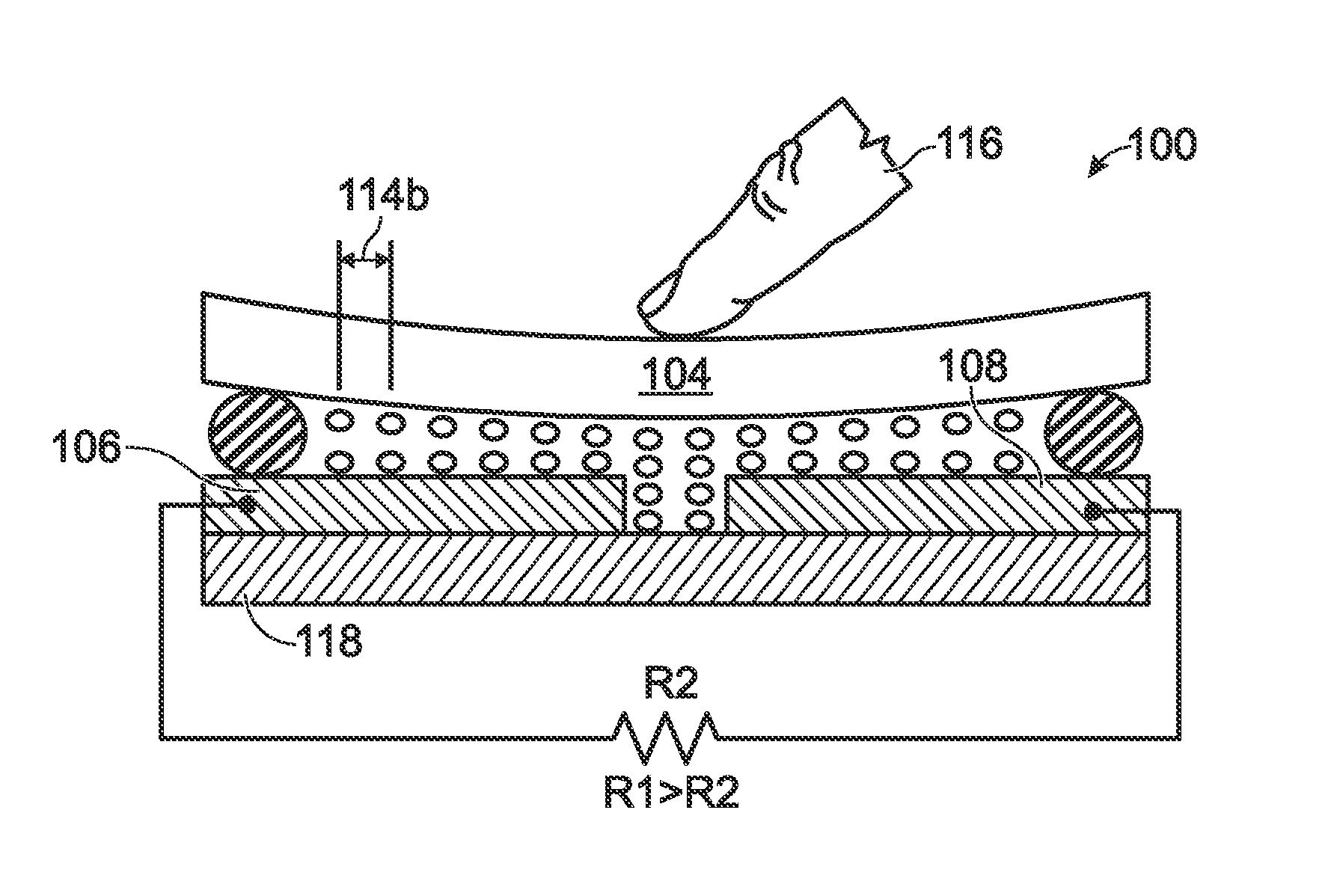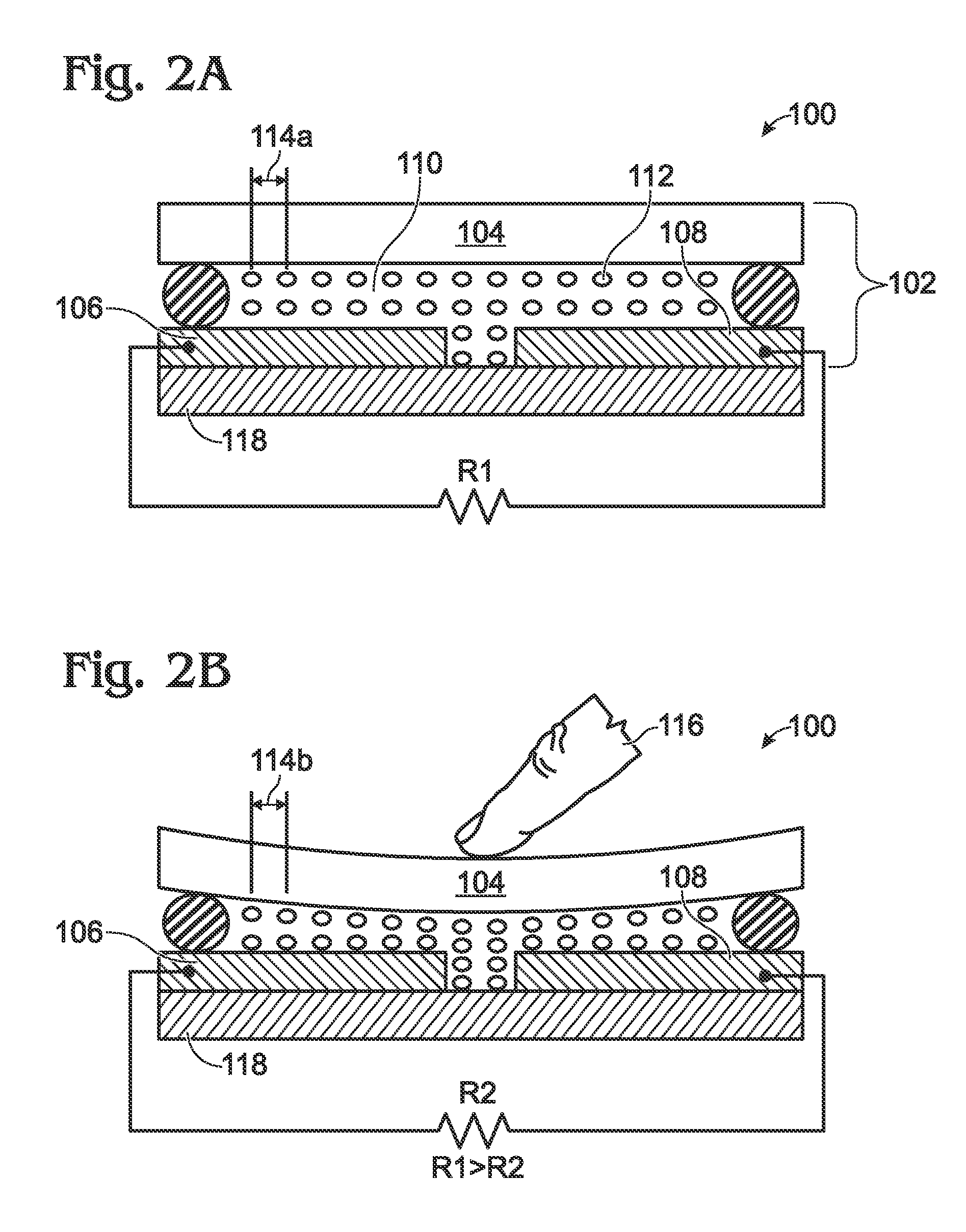Metallic nanoparticle pressure sensor
a nanoparticle and pressure sensor technology, applied in the field of electromechanical sensors, can solve the problems of increasing the resistance between electrodes and achieve the effects of increasing the tunneling current, and reducing the tunneling
- Summary
- Abstract
- Description
- Claims
- Application Information
AI Technical Summary
Benefits of technology
Problems solved by technology
Method used
Image
Examples
Embodiment Construction
[0028]FIGS. 1A and 1B are partial cross-sectional views of a pressure sensor. The pressure sensor 100 comprises a sealed chamber 102 with a top surface 104, a first electrode 106, and a second electrode 108. An elastic polymer medium 110, with distributed metallic nanoparticles 112, at least partially fills the sealed chamber 102. The nanoparticles may be randomly distributed or formed in an array. The elastic polymer medium 110 is in contact with the first electrode 106 and the second electrode 108 when the top surface 104 is deformed by an applied pressure.
[0029]Contrasting FIGS. 1A and 1B, the metallic nanoparticles 112 have a metallic nanoparticle-to-metallic nanoparticle mean distance 114 that decreases in responsive to applied pressure 116 on the top surface 104. The result is decreased electrical resistance between the first electrode 106 and the second electrode 108 through the elastic polymer medium 110 (R1>R2). More explicitly, the figures depict that the sealed chamber 10...
PUM
 Login to View More
Login to View More Abstract
Description
Claims
Application Information
 Login to View More
Login to View More - R&D
- Intellectual Property
- Life Sciences
- Materials
- Tech Scout
- Unparalleled Data Quality
- Higher Quality Content
- 60% Fewer Hallucinations
Browse by: Latest US Patents, China's latest patents, Technical Efficacy Thesaurus, Application Domain, Technology Topic, Popular Technical Reports.
© 2025 PatSnap. All rights reserved.Legal|Privacy policy|Modern Slavery Act Transparency Statement|Sitemap|About US| Contact US: help@patsnap.com



